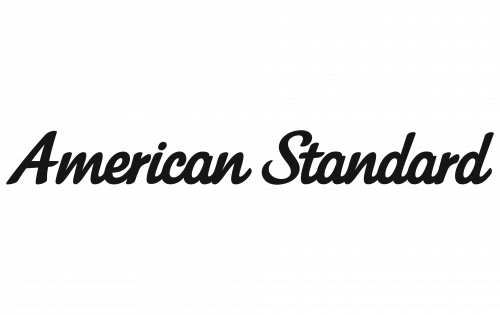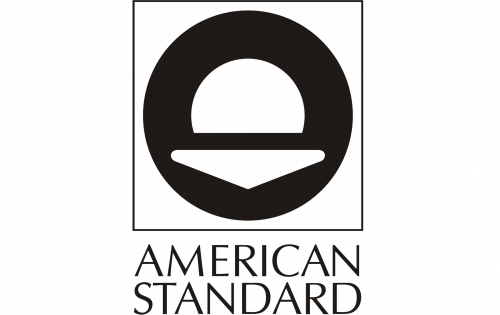American Standard is a plumbing fixtures brand, the property of American Standard Brands. The company’s roots can be traced back to 1929, when the American Radiator Company (established in 1892) merged with Standard Sanitary Manufacturing Company (established in 1875). The entity that appeared as the result of this merger was named the American Radiator and Standard Sanitary Corporation.
Meaning and history

The American Standard logo has always had a pronounced touch of refinement and elegance. What does it tell us about the type of product the brand produces?
1929 – 1969
1964 – 1969
In 1964, the name American Standard Corporation was adopted, which was by far easier to remember and which worked by far better as a brand name.
History has preserved one of the first logos of this period. It was a wordmark in a serif typeface, which looked quite old-fashioned. It was especially true for the word “Standard,” where all the letters had a Gothic touch. Take, for instance, the initial “S,” which seemed to have come from a medieval manuscript.
1969 – 1987
Only two years later, the brand adopted a more modern and efficient logo.
It was dominated by a black-and-white emblem, where the presence of the plumbing theme was pretty obvious. Below, the name of the brand could be seen. While you could still notice serifs there, they were tiny and there was nothing medieval about them anymore.
What is American Standard
Plumbing fixtures sold under the brand American Standard are produced by the North American company American Standard Brands. It is headquartered in Piscataway, New Jersey, US. It also owns such brands as Crane, Sanymetal, and Showerite.
However, we can’t say that the slim, elegant letters with a noticeable variation in the thickness of the lines worked that great for a plumbing fixtures brand. It was refined enough to serve as a logo for a jewelry brand, whereas from an American Standard logo, you would have expected something more robust. A bolder sans, it seemed, would have done a better job.
The company also had a bolder version of its logo. It conveyed the notions of reliability and strength better than the main wordmark, although the distinctive refined touch was still there. This version was used from 1984 to 1987.
1984 – 2013 (North America). 198? – 2016 (Asia Pacific)
While this version started to be used in 1984, it was only in 1988 that it attained the status of the primary logo.
On the one hand, it looked nothing like its predecessor. Gone were the emblem and the serif type. Now, a cursive script was used for the wordmark, which was colored blue.
It’s hard to figure out the reasons behind this choice. Traditionally, cursive script is used to add a personal touch. In this case, it might have been used to imply a high standard of quality suggesting that each piece was either produced manually or checked personally by skillful individuals, who then placed their signature on the label.
2013 – present (North America)
The wordmark was redrawn by the Sterling Brands agency. While the cursive type was still there, it looked even more refined and elegant. It was partly due to the artistic link between the “A” and “S.” The upward orientation added an optimistic accent.
2017 – present (Asia Pacific)
This version was more in line with the one introduced in 1984 rather than the 2013 logo produced by Sterling Brands. It was slightly more strict, utilitarian, and serious than the 2013 logo. However, it still was an elegant script wordmark.
Colors and font
Black, white, and gray are the colors that have been used in the American Standard logo most often. We can also mention blue, gold, and brown. The typography is based on a cursive script imitating a handwritten note.













